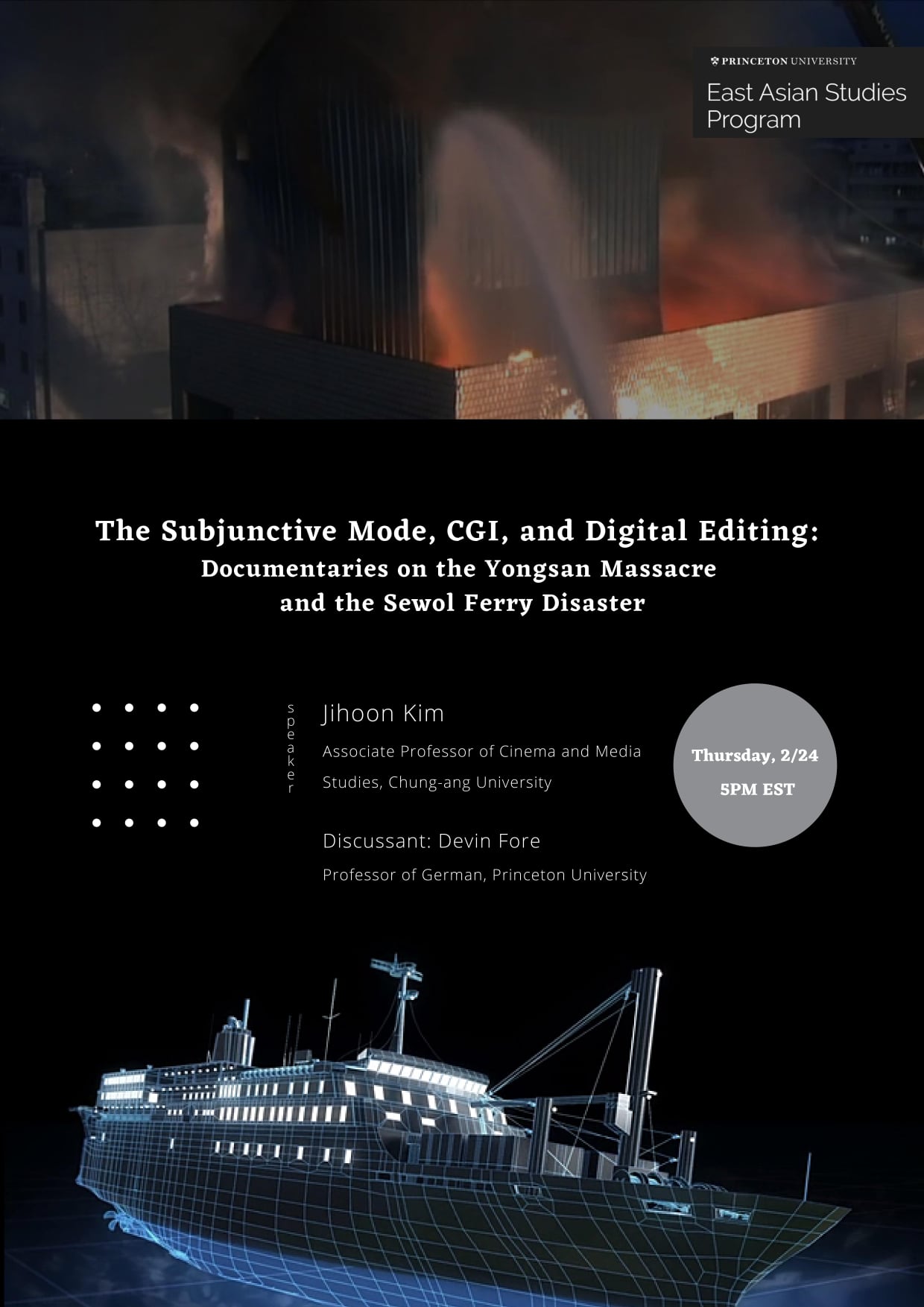time zone will be applied.
Report this post?

The East Asian Studies Program at Princeton University invites you to join Professor Jihoon Kim’s talk. It will be held virtually on February 24 at 5:00pm EST.
“The Subjunctive Mode, CGI, and Digital Editing: Documentaries on the Yongsan Massacre and the Sewol Ferry Disaster”
Jihoon Kim (Associate Professor of Cinema and Media Studies, Chung-ang University)
Discussant: Devin Fore (Professor of German, Princeton University)
This talk discusses the applications of computer-generated imagery (CGI) and digital non-linear editing to three documentaries in the 2010s on social events that profoundly impacted contemporary South Korean society, including the Yongsan Massacre in 2009 (Two Doors/ Tu kaeŭi mun, Kim Il-ran and Hong Ji-yoo, 2012) and the Sewol Ferry disaster in 2014 (The Intention [Kŭnal, pada, Kim Ji-yeong, 2018] and Ghost Ship [Yuryŏngsŏn, Kim Ji-yeong, 2020]). It argues for two more significant contribution of the films to Korean nonfiction filmmaking and its commitment to the Korean society’s contested reality and politics. First, the films attest to the formal and aesthetic expansion of documentary practice in the 21st century— and, by extension, to its production of reality and truth— in ways that are irreducible to the verité mode of the 1980s and 90s. And second, more than asserting the disavowal of the objective truth, the digital images and techniques employed in the films are used to scientifically investigate and reconstruct the events beyond the camera’s record for the sake of unveiling their truths. In order to demonstrate these two points, I examine the uses of digital imagery and technique in the three films in the light of how they mobilize what Mark J. P. Wolf has called ‘subjunctive mode,’ a subgenre of the documentary “concerned with what could be, would be, or might have been.” In so doing, I also contextualize the application of this mode to the post-verité Korean documentaries within the global trend of digital documentaries (exemplified by the works of Errol Morris and Forensic Architecture) based on the archival, databased, and algorithmic approaches to photos and videos whose evidentiary value is dismantled but which nevertheless demand viewing from every possible angle.